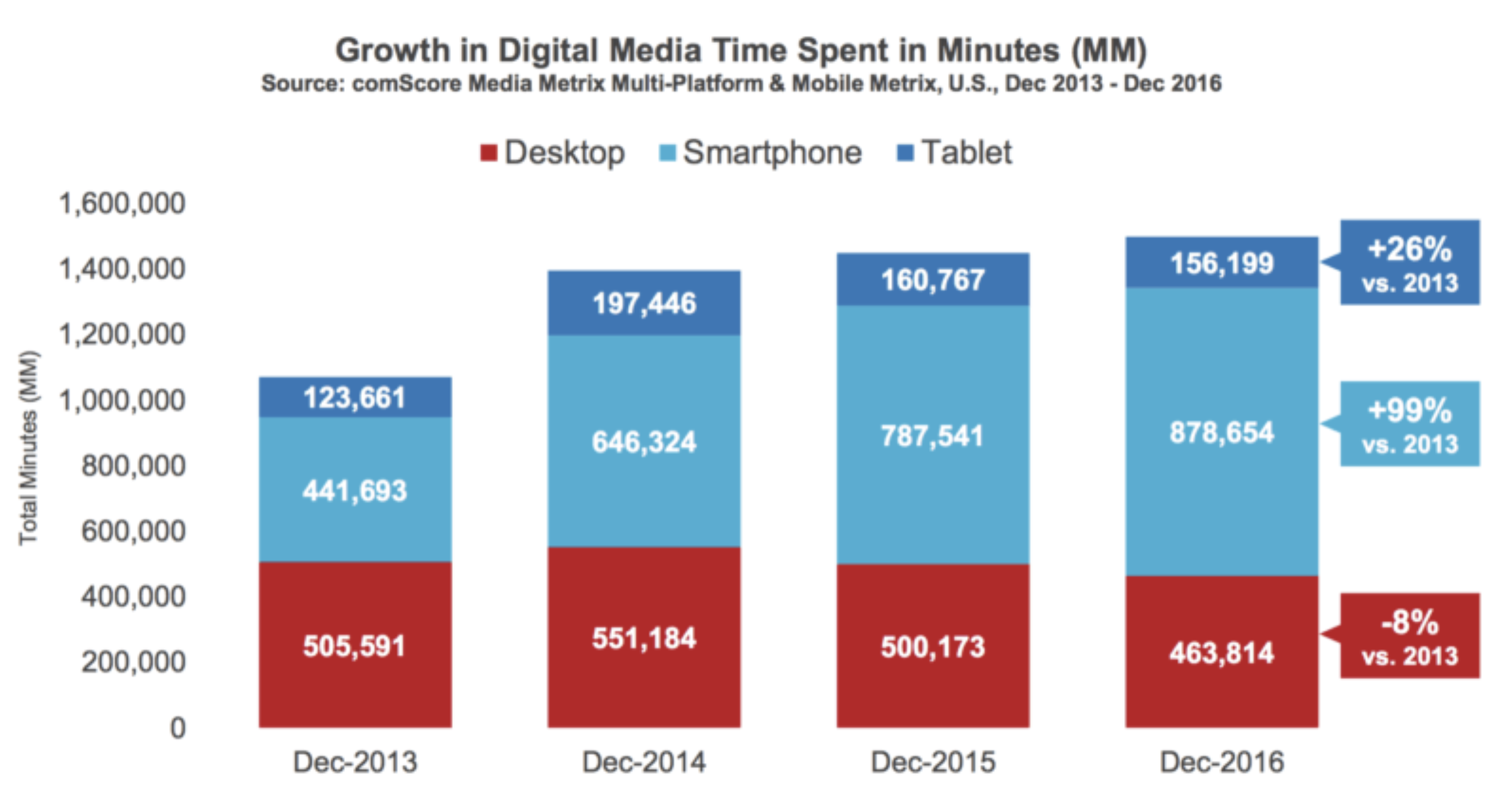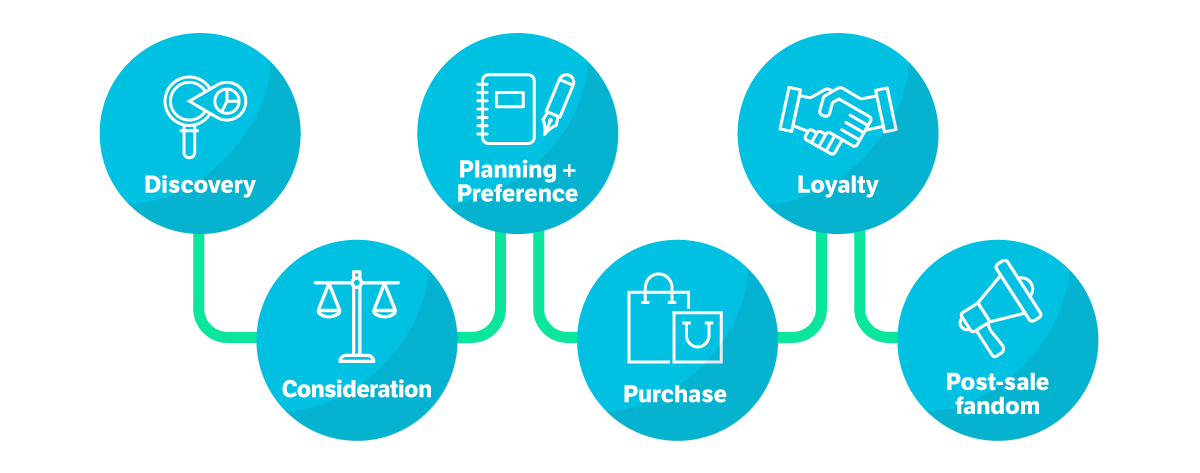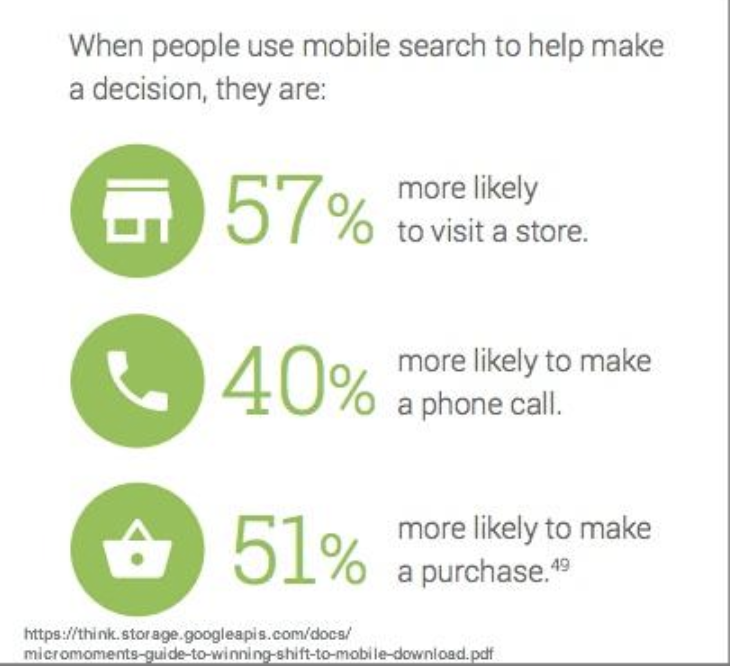
Customer Behavior Evolves as Mobile Surpasses Desktop
Mobile is quickly becoming the place for information consumption.
People can now access apps, information, and content on-the-go, and many consumers choose to have their mobile as their only device. They're our go-tos for socializing, entertainment, learning, shopping, sharing reviews, and location-based searching.
While once upon a time mobile phones were expensive and hard to come by, their incredible performance and increasingly affordable prices have helped them overtake desktop as the go to medium for consumers.
This means that businesses need to start re-thinking the way they engage and sell to consumers. When it comes to the customer journey, mobile has brought with it a flurry of new avenues to reach consumers on - think apps, websites, push notifications, and emails.
"This year, over half of our leads and sales are coming from online sources and the majority are from a mobile device, so we know that's where are customers are. We've made a big push to optimize everything we have to mobile. Whether it's our social channel, website, or our app." - Kevin Holifield, Franchise Marketing Manager at JD Byrider
More Actionable Results with Mobile
Now, instead of a simple, linear pathway to the sale, there are numerous ways to reach consumers. And, with the increase in personalization, brands are really having to think about how they can reach their customers and, more importantly, where they can reach them.
Smartphone usage is expected to reach a new record high in 2018, with an increase on the 63% share in 2017. This will have a knock-on effect for marketers who are actively seeking to allocate ads, with 59% of all ad spend expected to be pushed onto mobile in 2018.
If the predictions are right, mobile ad spend will reach a huge $156 billion in 2019 and will account for 26% of ad spends across all media.

So what does this mean for your business?
When it comes to actual time spent scrolling, consumers are increasingly choosing their mobiles over desktop, with the average American adult spending a whopping two hours and fifty-one minutes on their phones every single day.
But what are they actually doing during that three hour period?
Well, apart from browsing Facebook (one of the most-used apps on mobile), consumers are increasingly using mobile for local searches to find quick, actionable information.
Handheld devices act as a seamless filter to the world. With a desktop, you have to search for your query and then add a location, whereas when you use a smartphone it knows exactly where you are and can provide results based on that.
The results are then far more actionable than a desktop, hence why people turn to their mobiles when they need information fast.
This has changed the landscape of the customer journey. Businesses have to think about how they interact with their customers over a number of different channels.
Mobile is Drastically Changing How People Shop

Perhaps the biggest impact mobile has had has been on the customer journey. Let's take a look at the six stages of the buying cycle and what the surge in mobile usage means for it.
1. Discovery - In the research stages of the buying process, consumers are migrating from desktop to smartphones with over 50% using Google search from their mobiles.
2. Consideration - When consumers are deciding which brand to go for, they often conduct price comparisons through their smartphones. Around half of US mobile owners use their device to research a competitor's prices while in store.
3. Planning + Preference - When organizing their purchases, 43% of millennials use mobile to download coupons before a store visit, while 59% use their device to create and manage their shopping lists while on the move.
4. Purchase - When it comes to actually clicking the "buy" button, over a quarter of shoppers opt to do it on their mobile devices.
5. Loyalty - Post-sale engagement is increasingly being carried out via app notifications through personalized and triggered targeting. It's much less expensive to keep a customer than find a new one.
6. Post-sale fandom - Today, 44% of millennials use social media to evangelize products and carry out word-of-mouth marketing, with mobile being their preferred way to use social media.

What's more, implementing mobile throughout the customer journey has been proven to increase sales.
"(Mobile) literally affects everything, the way that we approach it to guide our (retail) clients is if we build you a website we show you the mobile wire frame and designs first and foremost, because 60-80% of your traffic is going to go there" - Kevin Planovsky, Co-founder of Vert, a full-service advertising & marketing agency
This Is Just the Beginning‚
As you can see, consumer experience is now being dictated by mobile more than ever, but this is just the beginning.
Further down the line, we can expect things to become even more pervasive, where mobile phones become the key way to reach consumers and tap into their wants and needs at every moment.
What Can We Expect in the Future?
So if this is just the tip of the iceberg what can we expect in the next few years?
Personalization to Create Unique Shopping Suggestions
Rather than generic promotions aimed at anyone and everyone, brands will be providing consumers with personalized suggestions.
Think about the futuristic screens in Minority Report or, on a less sci-fi scale, Amazon's wishlists for in-store purchases.
Brands are already sending segmented push messages to mobile users because they are proven to increase orders and sales, but in the future these alerts will share new products with customers based on their previous purchases.
Consumer interaction is becoming incredibly important and brands need to build relationships. Apps are perfect for nurturing one-on-one connections.

Take Facebook Messenger, as an example, which allows brands to open up direct communication with their customers. In the future, apps will no longer be purely informational tools, they'll also be serious engagement tools. If you'd like to know more, be sure to read our in-depth guide on using Messenger as a tool for customer retention and loyalty.
Consumers want things now and they don't want to enter a bunch of information before making a transaction.
Over the next couple of years, mobile experiences will become even more streamlined and simple, promoting the impulsive one click to buy mentality.
Mobile phones are already allowing consumers to seamlessly break the barrier between digital and the real world with geo-location options and intelligent personal data storage, and this will continue to develop in the future.
Mobile is already bridging the gap between in-store shopping and online shopping, and this will be a huge selling point of mobile marketing in the future.
Think of dedicated passbooks, like Apple Wallet, which collect an omnichannel view of a consumer, or consider in-store sales staff that walk around with tablets to quickly and easily tap into customer information.

These cloud based technologies and data storage features will make personalized recommendations across various channels a vital part of the future, something that isn't available in the desktop world.
One of the things people love about mobile is that your phone knows so much about you, what you want, and where you are.
Mobile is all about location, whereas desktop is landlocked and limited.
Essentially, they are the conduit to the consumer, providing deals and information based on where the consumer is at any given time.
This heavy emphasis on location is the reason why Google is pushing businesses to focus on optimizing for local audiences. The internet made the world accessible to all but, while local has always been important, it's only recently that brands have been able to connect with their consumers at that level.
This is a win-win for consumers, too. Many shoppers are willing to hand over their location information to brands in exchange for rewards and deals.
Mobile is Changing Consumer Behavior in Exciting Ways
Mobile has allowed brands to reach their consumers directly, wherever they are, whenever they want.
And, for consumers, the ability to purchase on-the-go and tap into personal recommendations has changed the landscape of shopping for good.
Now that consumers are no longer using desktops as much and are instead wielding the omnipresent powers of their phones, there is a lot more scope for brands to use location-focused services to reach the right people at the right time and turn them into a customer.
In the future, we might not see Minority Report screens, but we can certainly expect even more personalization, even more interaction, and an integrated new world that combines both shopping in real life and buying online.
